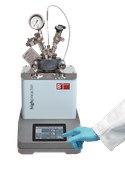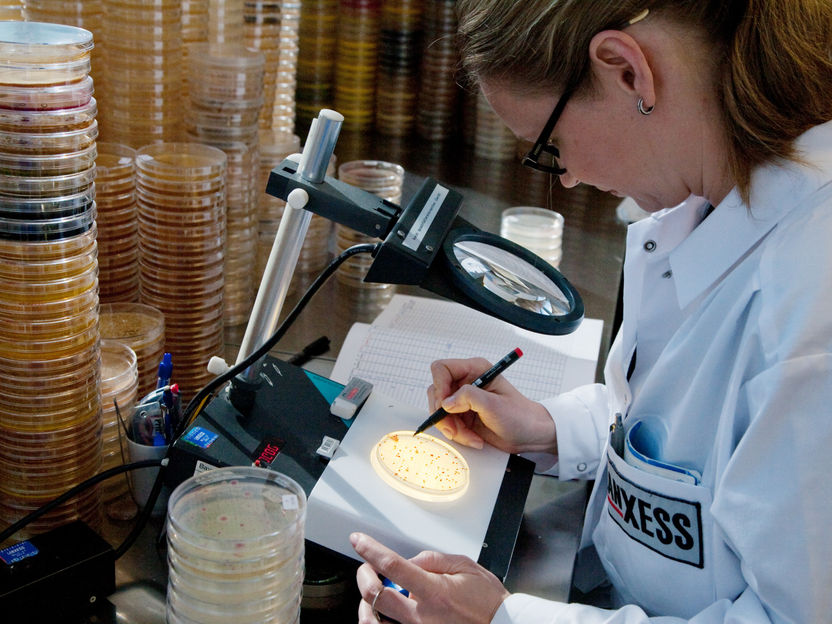Renewable chemical ready for biofuels scale-up
Using a plant-derived chemical, University of Wisconsin-Madison researchers have developed a process for creating a concentrated stream of sugars that's ripe with possibility for biofuels.
"With the sugar platform, you have possibilities," says Jeremy Luterbacher, a UW-Madison postdoctoral researcher and the paper's lead author. "You've taken fewer forks down the conversion road, which leaves you with more end destinations, such as cellulosic ethanol and drop-in biofuels."
Funded by the National Science Foundation and the U.S. Department of Energy's Great Lakes Bioenergy Research Center (GLBRC), the research team has published its findings in the Jan. 17, 2014 issue of the journal Science, explaining how they use gamma valerolactone, or GVL, to deconstruct plants and produce sugars that can be chemically or biologically upgraded into biofuels. With support from the Wisconsin Alumni Research Foundation (WARF), the team will begin scaling up the process later this year.
Because GVL is created from the plant material, it's both renewable and more affordable than conversion methods requiring expensive chemicals or enzymes. The process also converts 85 to 95 percent of the starting material to sugars that can be fed to yeast for fermentation into ethanol, or chemically upgraded furans to create drop-in biofuels.
To demonstrate the economic viability of this advance, Luterbacher needed to concentrate the sugar, remove the GVL for reuse, and show that yeast could successfully generate ethanol from the sugar stream.
"Showing that removing and recycling GVL can be done easily, with a low-energy separation step, is a little more of an achievement," says Luterbacher. "By feeding the resulting sugar solution to microorganisms, we proved we weren't producing some weird chemical byproducts that would kill the yeast, and that we were taking out enough GVL to make it nontoxic."
"What's neat is that we can use additives to make the solution separate," says Luterbacher. "It becomes like oil and vinegar." Their additive of choice: liquid carbon dioxide.
"It's green, nontoxic and can be removed by simple depressurization once you want GVL and solutions of sugar to mix again. It's the perfect additive," Luterbacher says.
An initial economic assessment of the process has indicated the technology could produce ethanol at a cost savings of roughly 10 percent when compared with current state-of-the-art technologies.
For the past several years, James Dumesic, Steenbock Professor and Michel Boudart Professor of Chemical and Biological Engineering at UW-Madison, and his research group have studied the production of GVL from biomass, and in more recent work they explored the use of GVL as a solvent for the conversion of biomass to furan chemicals.
"The knowledge gained in these previous studies was invaluable to us in the implementation of our new approach to convert real biomass to aqueous solutions of sugars that are suitable for biological conversion," says Dumesic.
This research has contributed new knowledge to the biofuels landscape, resulted in four patent applications, and gained recognition for GVL's commercial potential from WARF's Accelerator Program. The program helps license high potential technologies more rapidly by addressing specific technical hurdles with targeted funding and expert advice from seasoned business mentors in related fields.
Under the Accelerator Program effort, Dumesic will serve as principal investigator for an 18-month project involving construction of a high-efficiency biomass reactor. The reactor will use GVL to produce concentrated streams of high-value sugars and intact lignin solids.
Carbohydrates and lignin from the reactor will be delivered to scientific collaborators, including fellow GLBRC investigators, who will optimize strategies for converting the materials into valuable chemicals and fuels.
"We're excited by the team's scientific achievements and we look forward to supporting the project's next steps through the Accelerator Program," says Leigh Cagan, WARF's chief technology commercialization officer. "If the project successfully achieves the anticipated cost reductions for production of the sugars, lignin and ethanol, we anticipate significant commercial interest in this novel process."
Most read news
Topics
Organizations
Other news from the department science
These products might interest you

Berghof - Reactor Controller by Berghof
High-performance heating system: Precision for small reactors up to 300 ml
Discover auto-tuning, intelligent stirring and air cooling for precise process control

Berghof Reaktortechnologie - Hoch- und Niederdruckreaktoren, Druckbehälter und metallfreie Reaktoren by Berghof
Safe high- and low-pressure systems for aggressive media
Corrosion-resistant reactors with PTFE lining - individually configurable

Get the chemical industry in your inbox
By submitting this form you agree that LUMITOS AG will send you the newsletter(s) selected above by email. Your data will not be passed on to third parties. Your data will be stored and processed in accordance with our data protection regulations. LUMITOS may contact you by email for the purpose of advertising or market and opinion surveys. You can revoke your consent at any time without giving reasons to LUMITOS AG, Ernst-Augustin-Str. 2, 12489 Berlin, Germany or by e-mail at revoke@lumitos.com with effect for the future. In addition, each email contains a link to unsubscribe from the corresponding newsletter.
Most read news
More news from our other portals
Last viewed contents

LANXESS expands capacity of microbial active ingredient Preventol CMK by 50 percent - Long-term trend towards more disinfection

Ultrafast dissociation of molecules studied at BESSY II - Findings could deepen our understanding of chemical reactions at the molecular level




























































